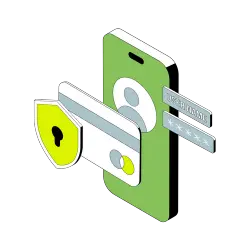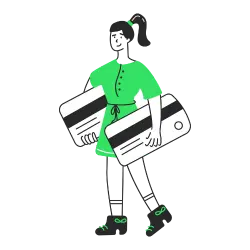TABLE OF CONTENTS
Did you receive the ACH return code R37? With the world becoming increasingly virtual, businesses are operating electronically now more than ever before, leading to more and more instances in which merchants face various error codes. Online transfers have nearly taken over the payments industry. ACH payments take the front lines. In fact, 29.1 billion ACH payments valued at $72.6 trillion took place in 2021 alone.
Because ACH payments make up such a large part of the market, business owners must familiarize themselves not only with how these transfers work but also with how to address any issues that may occur during the transfer process. Most importantly, merchants should seek to understand the ACH return process and the various codes that provide reasoning behind each return. In this article, we’ll go over ACH returns and take a closer look at ACH return code R37: Source Document Presented.
What are ACH payments?
Automated Clearing House (ACH) payments refer to a type of electronic transfer used in the US. The ACH payment method uses banks and other financial institutions to deliver funds from a debtor to a creditor. The ACH payment processing network oversees these transactions electronically as they are strictly digital and no physical transaction occurs.
What are ACH returns?

An ACH return occurs when the ACH was unable to successfully collect funds from the customer’s associated bank account. This can happen for a number of reasons, including technical difficulties, improper information, or even user error. Once the initial return occurs, the transferring of funds remains unsuccessful until the underlying issue is resolved.
What is an ACH return code?
An ACH return results in an ACH return code. The code consists of three characters: one letter followed by two numbers. The initial character for all 85 current return codes is ‘R,’ indicating a “return.” Each two-digit end to a return code indicates the grounds for return as well as how to specifically handle and resolve the issue at hand.

NACHA
The responsibility of governing the entire ACH network falls to the National Automated Clearing House Association (NACHA). The association created and standardized the ACH return codes across industries allowing understanding from banks, payment processors, and merchants alike. NACHA continues to manage return codes and oversee the entire ACH network. Additionally, NACHA designates the guidelines for solutions to each return code and when necessary, creates completely new return code messages.

ODFIs
The Originating Depository Financial Institution (ODFI) operates as one end of an ACH transfer. To work as an ODFI a financial institution must obtain a prior agreement with an ACH operator. The Clearing House and the Federal Reserve work as ACH operators. Having ODFI credentials allows the institution to transmit entries within the ACH network. The ODFI works on behalf of the originator, the business, or the individual initiating payment. Most major banks operating in the US maintain ODFI-approval. Additionally, payment processors, payment gateways, and ACH payment APIs may also seek ODFI authorization.

RDFIs
On the other hand, the ACH payment system has RDFIs or Receiving Depository Financial Institutions. RDFIs represent the business or individual receiving funds through the ACH transfer. Similarly, RDFIs must seek approval from ACH operators just as ODFIs must gain authorization. Most major banks in the US have both ODFI and RDFI approval. Subsequently, without prior authorization, an institution is unable to participate in ACH transfer on the behalf of its customers. Furthermore, many third-party payment processors, payment gateways, ACH payment APIs, and other financial institutions retain RDFI status and can therefore engage in ACH payment transfers.
What Does ACH Return Code R37 Mean?

While the lower digit ACH return codes are more common, return R37 is less common. However, you should still be aware of the meaning behind this code and how to properly resolve the associated issue. ACH return code R37 occurs when a source document presents payment. More specifically, a source document that relates to an ARC (Accounts Receivable Conversion), BOC (Back Office Conversion), or POP (Point-of-Purchase) entry. A source document refers to the original document containing details of a business transaction. Return code R37 occurs within both consumer and non-consumer accounts.

Formal definition
ACH return code R37 formally means that a source document was presented for payment. Specifically, the source document that an ARC, BOC, or POP entry relates to was presented for payment.
Solutions to Fix R37 Return Code
In the case of ACH return code R37, the receiver may request immediate credit from the RDFI. This request must be submitted in writing within 15 days of the RDFI sending or making the debit entry information available to the receiver. Additionally, the receiver must provide the RDFI with a written statement that the source payment was presented for payment. This statement falls under the penalty of perjury and therefore should not be taken lightly.
If an RDFI utilizes return code R37, they must transmit the return entry by the ACH operator’s deposit deadline. This allows the return entry to be made available to the ODFI no later than the banking day’s opening of business within sixty calendar days following the Settlement Date of the entry.
Remember that a return code indicates that regardless of the reason, the ACH could not collect funds from the customer’s account. No payment has been secured and the bill remains outstanding. The customer still owes a debt to the merchant. Be aware, that a merchant may request an entirely different form of payment from the customer. Until funds transfer safely either by way of ACH payment or another accepted payment method, the transaction remains incomplete.
Final Thoughts
ACH return codes may feel daunting, but remember that your chosen financial institution or payment processor is available to help you navigate these hiccups in the payment process. However, you should still seek to familiarize yourself with the various ACH return codes so you are better equipped to handle any potential problems and ensure a smooth process when accepting ACH payments.
Currently, there are 85 ACH return codes in existence. These codes continuously change and evolve as NACHA clarifies, updates, and adds to this ongoing return code list. Merchants must stay up to date with any changes to this list in order to stay on top of their business and maintain a greater understanding of the ACH network and its increasingly popular payment transfer system.




